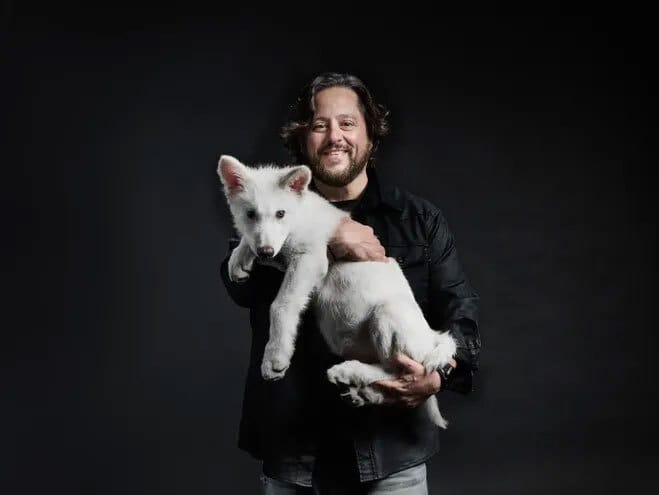
In the event that you’ve been holed up in the woods for a few days (kudos to you if you have), you’ve likely heard the mutterings floating around the world wide web regarding a new old wolf species that has suddenly been brought back from extinction.
But not in the usual way we tend to bring things back from extinction. Or at least near extinction.
Rather than importing a few subjects and protecting the hell out of them until they find a way to create a new breeding population, in the case of the dire wolf - a species that has been extinct for over 10,000 years - we went ahead with a crazy science experiment instead.
Colossal Biosciences, a biotech company based out of Dallas, announced on Monday that they’ve successfully brought back the dire wolf. Claiming to be at the helm of the "world’s first de-extinction," the company’s bold statement sparked both excitement and skepticism around the world.
The process they used to tackle the feat involved taking ancient DNA from dire wolf fossils - like a 13,000-year-old tooth and a 72,000-year-old skull - and then using it to reconstruct a dire wolf genome. With that DNA on hand, they then used CRISPR gene-editing tech to tweak the DNA of gray wolves, making 20 edits across 14 genes to introduce dire wolf traits like larger size, thicker fur, and stronger jaws.
The result? Three pups including two males, Romulus and Remus, who were born on October 1, 2024, and a female, Khaleesi, who was born later, who are now all now living in a secret U.S. location.

Romulus at 5 months old - Colossal Bioscience
So while we do have something that certainly looks and sounds like a dire wolf, the fact remains that it seems as though the folks behind this didn’t resurrect dire wolves in the purest sense of the word. Unlike pulling a fully intact dire wolf out of the past, Jurassic Park-style, Colossal started with gray wolves, which are the closest living relatives to dire wolves, sharing about 99.5% of their DNA.
True de-extinction, in the eyes of many scientists, would mean cloning a dire wolf using its complete, original DNA, preserved perfectly enough to grow an exact replica. Think of how Dolly the sheep was cloned from a single adult cell’s nucleus.
For dire wolves, that’s not an option.
Their remains, including bones, teeth and some degraded tissue, are, in some cases, upwards of 70,000 years old, and ancient DNA from fossils remains quite fragmented. Even the best samples, like that 13,000-year-old tooth or 72,000-year-old skull, only give partial genetic blueprints and not a full, pristine genome.
Colossal calls them "functional copies," admitting that these new pups aren’t 100% dire wolves genetically. They’re gray wolves with a dire wolf upgrade package. Dire wolves (Canis dirus) and gray wolves (Canis lupus) split evolutionarily about 5.7 million years ago, and as close as they may be genetically, they’re still two distinct species.

Colossal CEO Ben Lamm
The truth is, editing a handful of genes can’t rewrite that whole evolutionary history. Some scientists argue that this makes them hybrids, not resurrected dire wolves. It’s like taking a modern car, swapping in some vintage parts, and calling it a Model T. It might drive similarly, but it’s not the real deal.
On the flip side, Colossal’s team has said genetic purity isn’t the point. They’re aiming for an animal that embodies the dire wolf’s essence rather than an exact DNA match. Since we can’t get a full dire wolf genome anyway, this might be as close as we can get. And functionally, these wolves could behave like their extinct ancestors, which matters more for ecosystem restoration than a perfect genetic scorecard.
So, did we de-extinct the dire wolf? Not in the strictest sense, no. As of today, no one’s brought back an unadulterated Canis dirus, including these cute little pups of “Game of Thrones” fame.
What we’ve got is a close copy, a gray wolf tweaked to channel its inner dire wolf, which is pretty cool in of itself. Whether that counts as "de-extinction" depends on how you define it.
Beyond these fluffy hybrids (or whatever you end up calling them), Colossal’s got big plans, targeting species like the woolly mammoth and the dodo next.
How pure will those prototypes be? Well, that all depends on how you define it.

